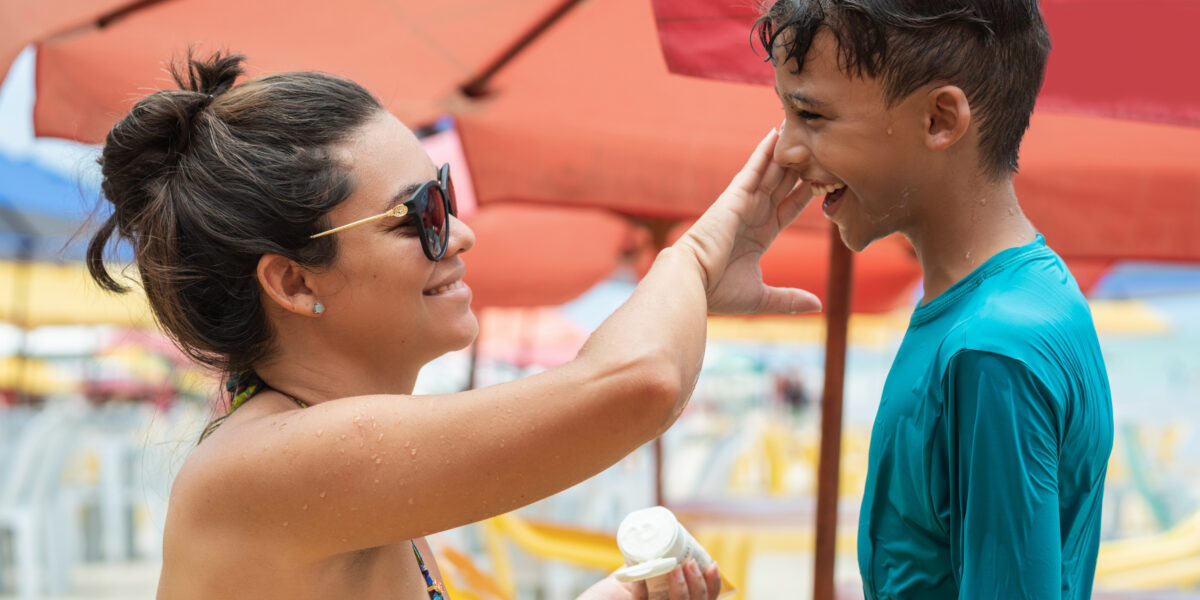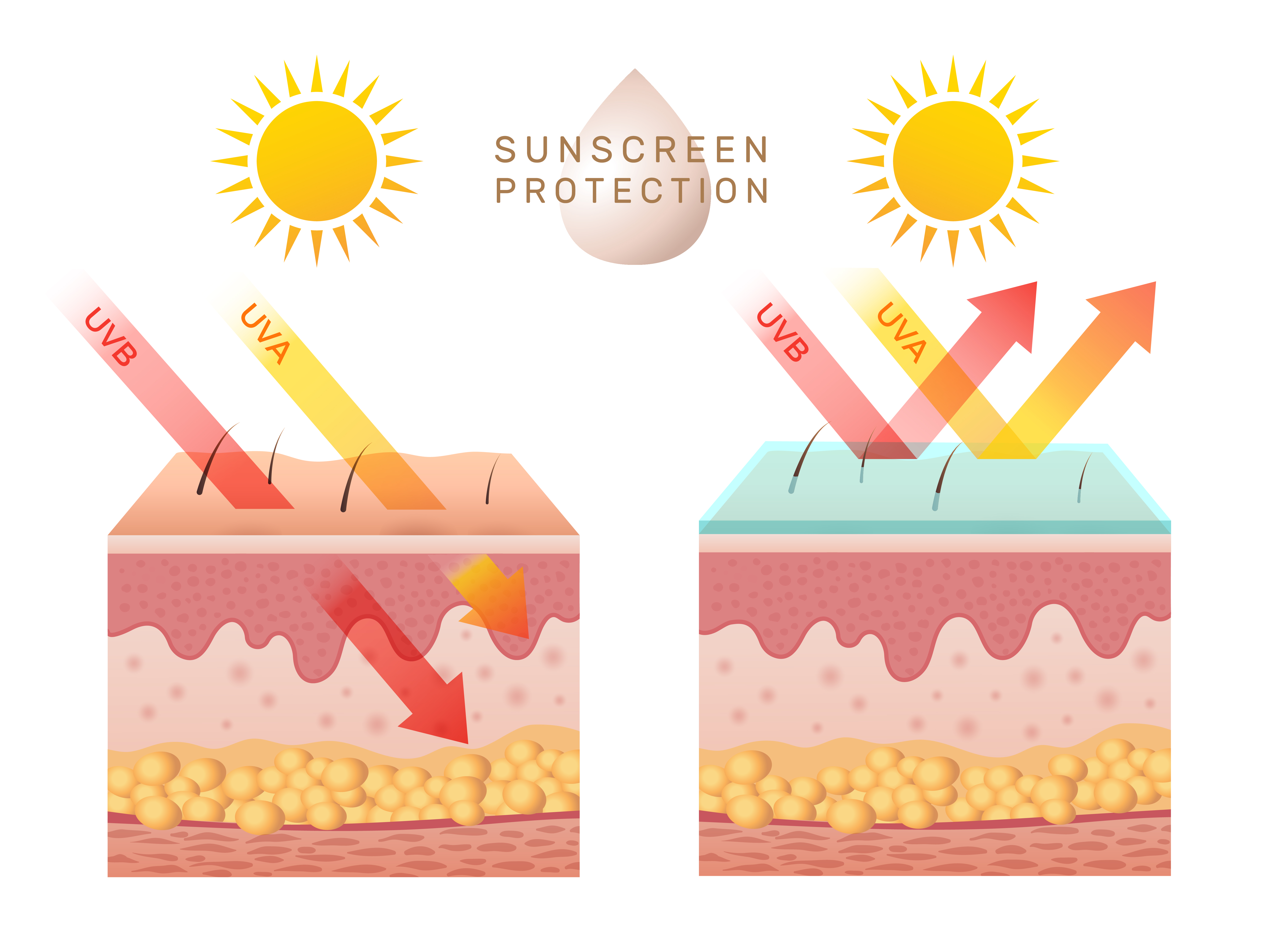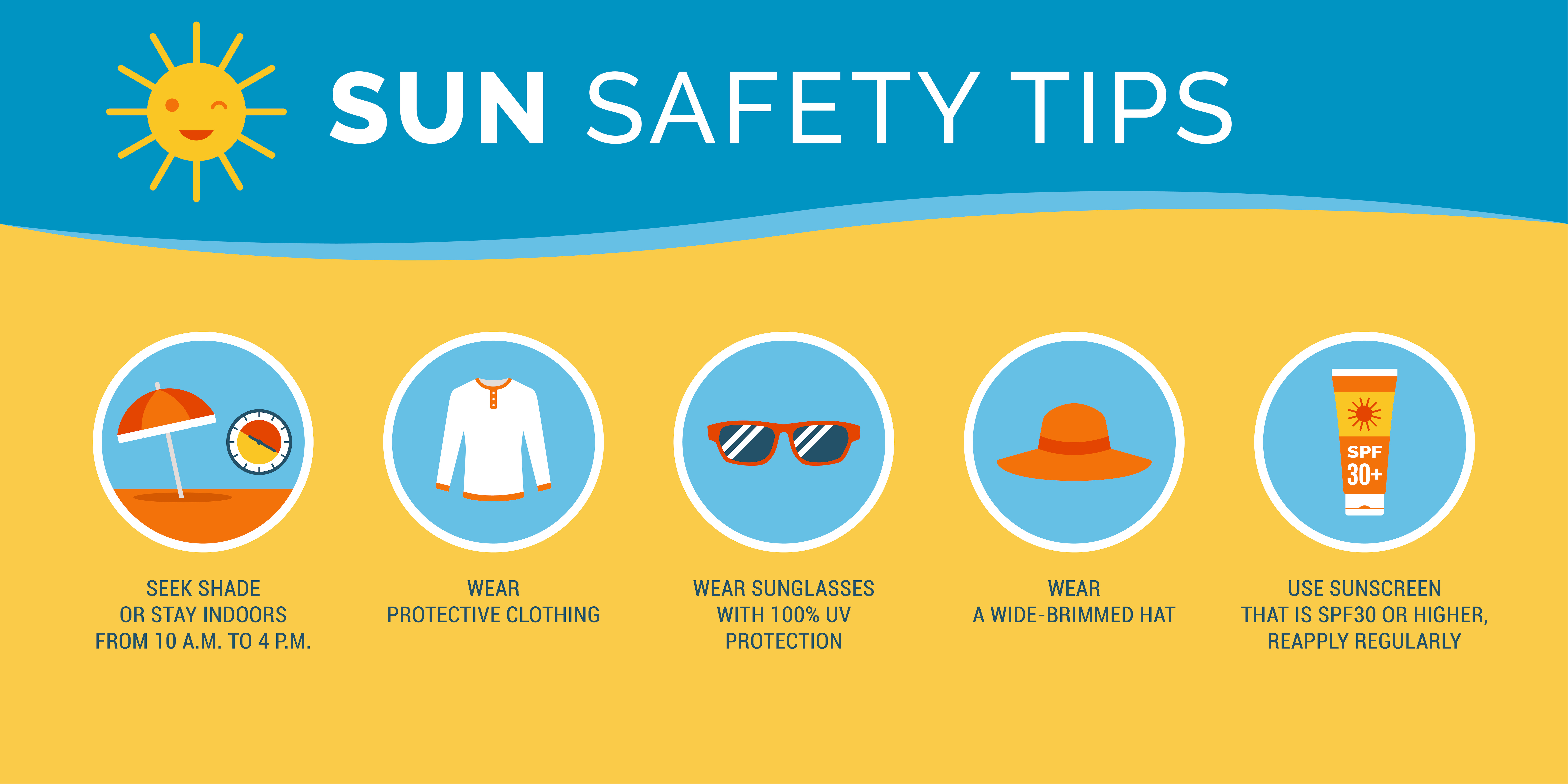Sunny days represent some of the best moments we make for ourselves. Whether playing on the sandy shores of our local beaches and beyond, walking our dogs in a park or barbecuing outdoors with our favorite people, it’s tempting to put sun safety on the back burner of our priority list. But the truth is – protecting your skin should be one of the first things you think about before participating in any outdoor activities. Before you head to the beach, the lake or your best friend’s pool, you need to armor up to stay safe from the sun.
Why should we protect our skin from the sun’s harmful Ultraviolet (UV) rays? Because the numbers don’t lie.
Delaware is one of the top states in the nation for patients diagnosed with melanoma. Many states that count on coastal activities such as sunning on the beach, playing in the ocean or golfing on the green have an increased presence of melanoma.
According to Delaware Health and Social Services, Delaware has a significantly higher melanoma incidence rate compared to the rest of the U.S. Among all states, Delaware and Montana tied for the eighth-highest incidence rate for melanoma. Broken down, this means that Delaware ranks higher than the national average for people diagnosed with melanoma.
Contact us at the Graham Cancer Center to schedule an appointment with our Melanoma Multidisciplinary Center. Call us at 302-623-4509.
What is melanoma?
Melanoma is the most serious type of skin cancer and can spread quickly to other parts of the body. Most melanomas show up as a new spot or skin growth. Melanoma can often look like a mole with uneven edges and a shape that isn’t the same on both sides or raised. It may be black, brown, pinkish, red or more than one color. Less often, melanoma starts in other places, such as the eye. In people with darker skin, some of the most common sites are the palms of the hands, the soles of the feet and underneath the nails.
What causes melanoma and where can I get it on my body?
Too much UV radiation (often known as UVA and UVB) from sun exposure can damage DNA in the skin, which can cause normal skin cells to become abnormal. These abnormal cells can quickly grow out of control. Having lighter skin, a fair complexion, a family history of melanoma or many abnormal moles puts you at higher risk for this disease.
You can get melanoma anywhere on your body. This is why it is so important to regularly check your skin. Routine skin screenings with your primary care provider or dermatologist should be part of your routine health care. Full-body skin exams should be performed every year and even more frequently in higher-risk patients. If diagnosed with any skin cancer, you’re at risk for other skin cancers.
Who would benefit from protecting their skin from the sun?
A tan is a trauma response in the body as it tries to protect you against the toxic rays of the sun.
Anyone and everyone can get burned by the sun, but the risk of melanoma is higher for those with a fairer complexion. A tan is a trauma response in the body as it tries to protect you against toxic rays from the sun. Many people view a tan as being healthy, but medically it’s the body’s response to injury and an attempt to protect against damaging radiation.
People with a higher risk for sunburn and melanoma are:
- People with albinism (no skin pigmentation).
- People of fair complexion with light skin, light hair color and light-colored eyes.
- People with darker skin pigmentation underneath toenails and fingernail beds.
- Children and older adults.
- People taking certain medications. Check with your pharmacist or health care provider to learn more about your medication and sun exposure risk.
- Anyone recently sunburned, especially with blistering, peeling and severe sunburns.
- People diagnosed with skin cancer.
- People at higher elevations, close to the equator or on the water. Sun rays bounce off the water and the sand. Higher elevations and altitudes mean more UV radiation and an even higher risk. This includes sunny days in the winter when you can still get burned while skiing in the mountains.
What’s the difference between UVA and UVB rays?
Ultraviolet light comes from the sun’s rays but is invisible to humans. Two of the three forms of ultraviolet light — UVA and UVB rays — reach the earth and can damage a person’s skin and eyes.
UVA rays are strongest in the morning and afternoon. These rays go right through window glass, penetrate deeply into the skin and are more common in UV radiation. UVA leads to melanoma and other types of cancer, including squamous cell and basal cell cancers.
UVB rays affect the outer layer of the skin and can cause sunburns. They are strongest around the middle of the day when the sun is brightest, between 10 a.m. and 4 p.m. UVB rays are a shorter wavelength but are more responsible for melanoma and cataracts with more DNA mutations than UVA, but they work in tandem like partners in crime!
Tanning booths also use and transmit ultraviolet light and cause melanoma.
Armor up and protect yourself
Don’t worry, you can still have fun in the sun! Just safeguard yourself by following these protection methods.
- Have fun outdoors but manage your time.
10 a.m. – 4 p.m. – UV ray risk period.
2 -4 p.m. – the highest UV ray risk period.
Sunrise to sunset – if the sun is out and you are out — you wear sun protection. No matter if it’s spring, summer, winter or fall.
- Use sunscreen with an SPF rating of 30+ or higher, even on a cloudy day or in the shade. Make sure the sunscreen water- and sweat-resistant. Apply early in the morning, then repeat every 90 minutes. You’ll likely sweat that sunscreen off, or it will rinse off in the pool or lake. After 30 minutes in ocean waves, get out and reapply. Your skin will thank you.
- Wear a UPF rash guard. This athletic shirt protects the skin from the sun’s harmful rays while swimming.
- Wear a wide-brimmed hat that covers your neck, ears, eyes, scalp including the part in the hair.
- Wear UV ray-blocking sunglasses. Remember: If it’s bright enough outside for you to wear sunglasses, you should put sunscreen on exposed skin or wear a hat.
- (UPF) ultraviolet protection factor clothing. UPF indicates how much UV radiation (both UVB and UVA) a fabric allows to reach your skin. UV protection doesn’t last as long as the clothing itself. When the fabric wears out, the UV protection wears out, too.
- Are you putting sunscreen on the spots not covered by UPF clothing? Remember your hands, face, ears, wrists and ankles. They need some love, too. Get under every strap and stretchy band. People with less hair need to protect their scalps as well!
Sunscreen and UPF clothing won’t completely prevent sunburn or skin damage, but they can significantly reduce your risk. If you’re in the sun for six or more hours while using these protective methods, you are still at risk of being burned. The only way to truly block rays from the sun is to stay inside between 10 a.m. – 4 p.m. when the risk for sun damage is greatest. The choice is yours – stay inside or armor up! Most importantly, we hope you have fun while staying safe in the sun.





